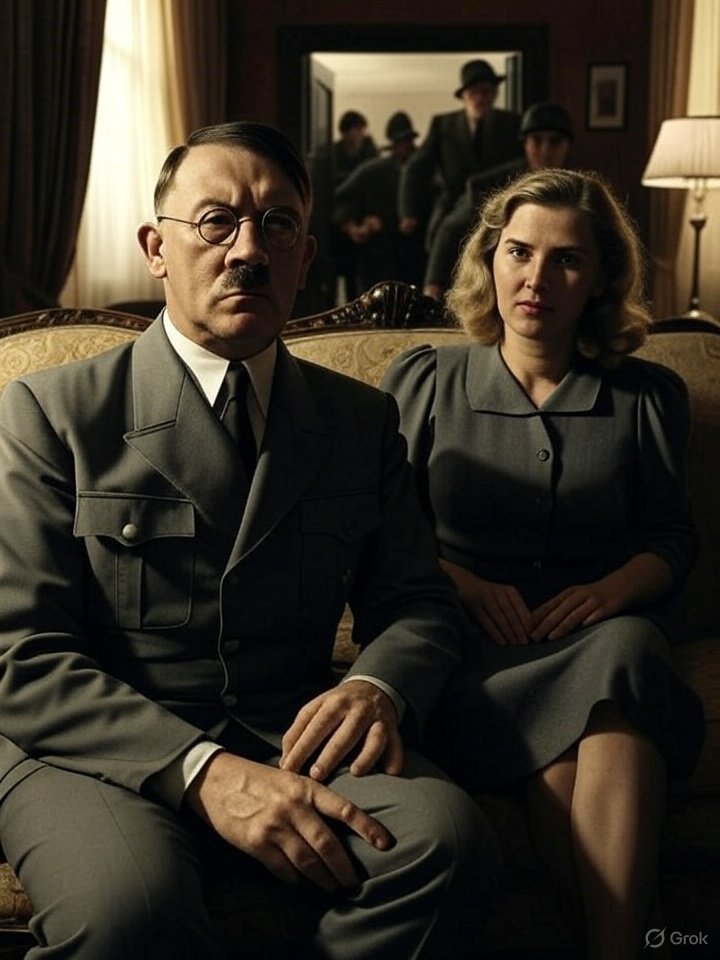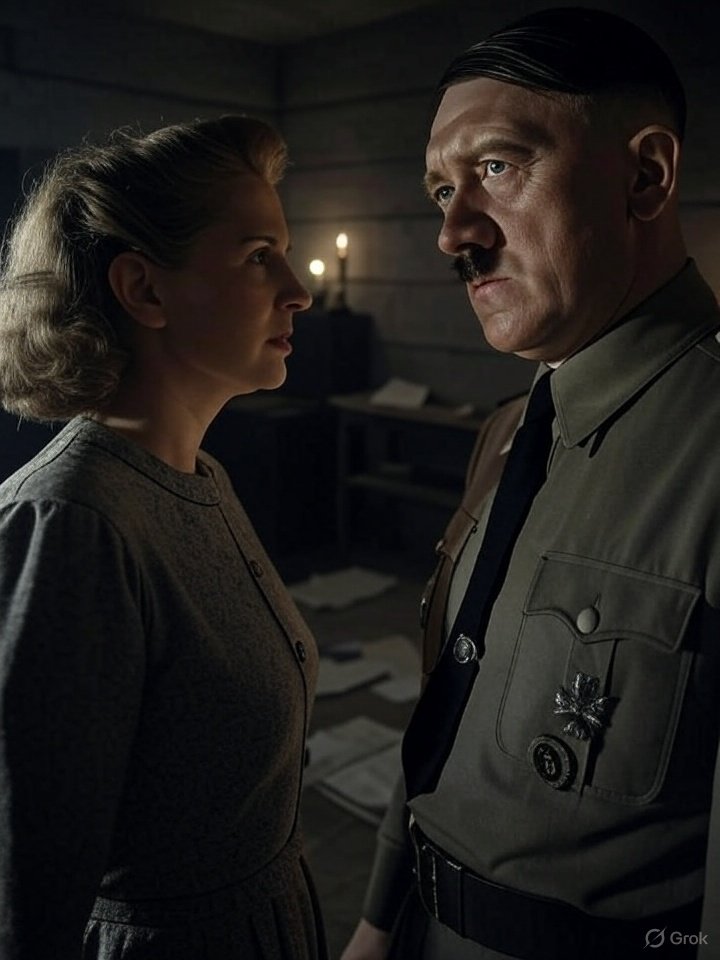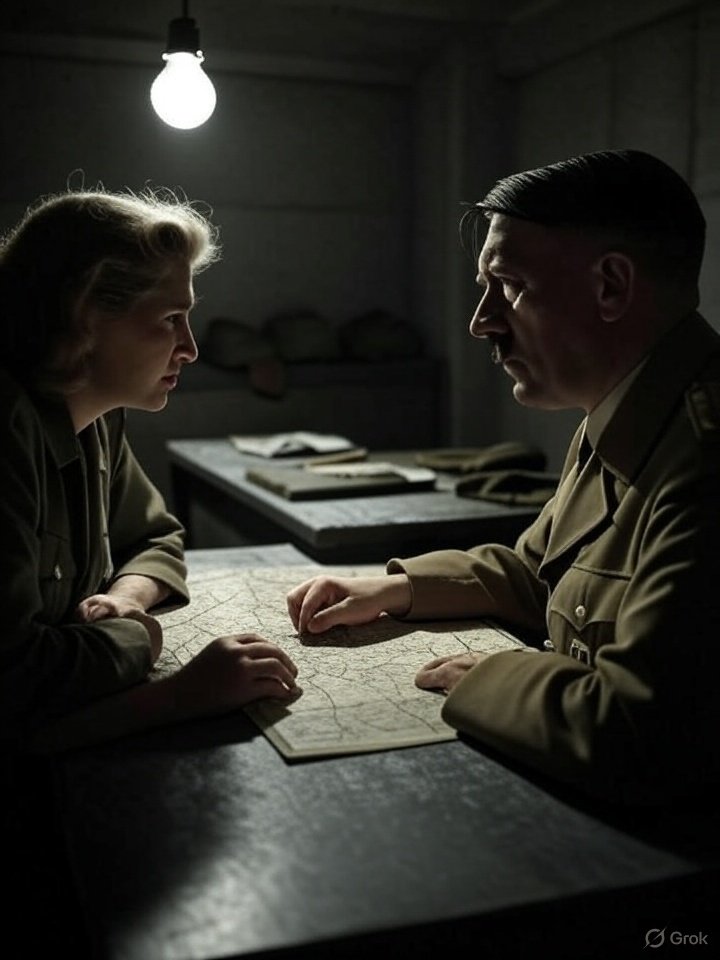
Assuming the conspiracy theory about Adolf Hitler and other Nazis escaping to Argentina is true, here I describe how that escape might have occurred, their life in South America, and how some of these criminals were pursued, based on the most common narratives of this theory and the historical context of Nazi escape networks.
In April 1945, with Berlin under Soviet siege, Adolf Hitler and Eva Braun, along with a small circle of loyal officers, reportedly orchestrated their escape. On April 22, while rumors of their suicide circulated as a distraction, Hitler and Braun escaped from the Chancellery bunker through a secret tunnel that connected to Tempelhof Airport.
There, a Junkers Ju 52 aircraft was waiting to take them to Linz, Austria, a city Hitler considered his spiritual home. From Linz, they traveled overland to Barcelona, Spain, where Spain, under Franco's regime, offered a temporary refuge to the Nazis due to its neutrality and sympathy toward the Axis.
In Vigo, Galicia, they boarded the U-boat U-977, which sailed to Argentina, with a brief stop in the Canary Islands for resupply. At the end of July 1945, Hitler and Braun reportedly landed in Patagonia, near Necochea, where they were met by agents of the Nazi network ODESSA (Organization of Former Members of the SS).
Other Nazi leaders also fled to Argentina using similar routes, known as "ratlines." These networks, supported by figures such as the Austrian bishop Alois Hudal and the government of Juan Domingo Perón, facilitated the escape of criminals such as Adolf Eichmann, Josef Mengele, and Klaus Barbie.
Eichmann, for example, escaped to Genoa in 1946 with a false Red Cross passport under the name Ricardo Klement, arriving in Buenos Aires in 1950. Mengele, known as the "Angel of Death" for his experiments at Auschwitz, fled through Italy and arrived in Argentina in 1949, initially settling in Vicente López, a suburb of Buenos Aires.
The Nazis settled in low-key communities, such as Bariloche, where Hitler is said to have lived on the San Ramón estate under the pseudonym Kurt Bruno Kirchner.
There, according to this narrative, Hitler and Braun would have led a quiet life, even having three children, while maintaining contact with other Nazi exiles and occasionally traveling to Brazil and Paraguay.
Argentina, under Perón, offered a safe haven. Perón, who assumed power in 1946, viewed the Nazis as a useful resource: their scientists and engineers could contribute to the country's development, and their financial networks, which included looted Nazi gold, benefited the economy.
It is estimated that between 1945 and 1955, at least 5,000 Nazis arrived in South America, many in Argentina, with the support of figures such as Croatian Ustashi leader Ante Pavelić, who also sought refuge there.

However, the presence of these criminals did not go unnoticed. In the 1950s and 1960s, "Nazi hunters," such as Simon Wiesenthal and the Israeli Mossad, began tracking them down. Wiesenthal, a Holocaust survivor, founded the Jewish Documentation Center in Vienna and dedicated his life to locating those responsible for the genocide.
In 1960, the Mossad captured Adolf Eichmann in Buenos Aires. Eichmann was living modestly in the San Fernando neighborhood, working in a Mercedes-Benz factory, when Israeli agents kidnapped him on May 11, 1960.

He was taken to Israel, where he was tried for crimes against humanity, found guilty, and executed in 1962. His capture sent a clear message: there would be no safe haven for war criminals.
Others did not suffer the same fate. Josef Mengele, despite being intensively sought after, evaded capture. He lived in Argentina until 1959, when international pressure forced him to move to Paraguay and then to Brazil.
He died in 1979 in Bertioga, Brazil, drowned while swimming, under the alias Wolfgang Gerhard. His death was confirmed in 1985 after his body was exhumed and his DNA analyzed.
Klaus Barbie, known as the "Butcher of Lyon," also fled to Argentina in 1951 before settling in Bolivia, where he worked for the military regime.
He was captured in 1983 by French Nazi hunters, extradited to France, and sentenced to life imprisonment in 1987 for war crimes, dying in prison in 1991.